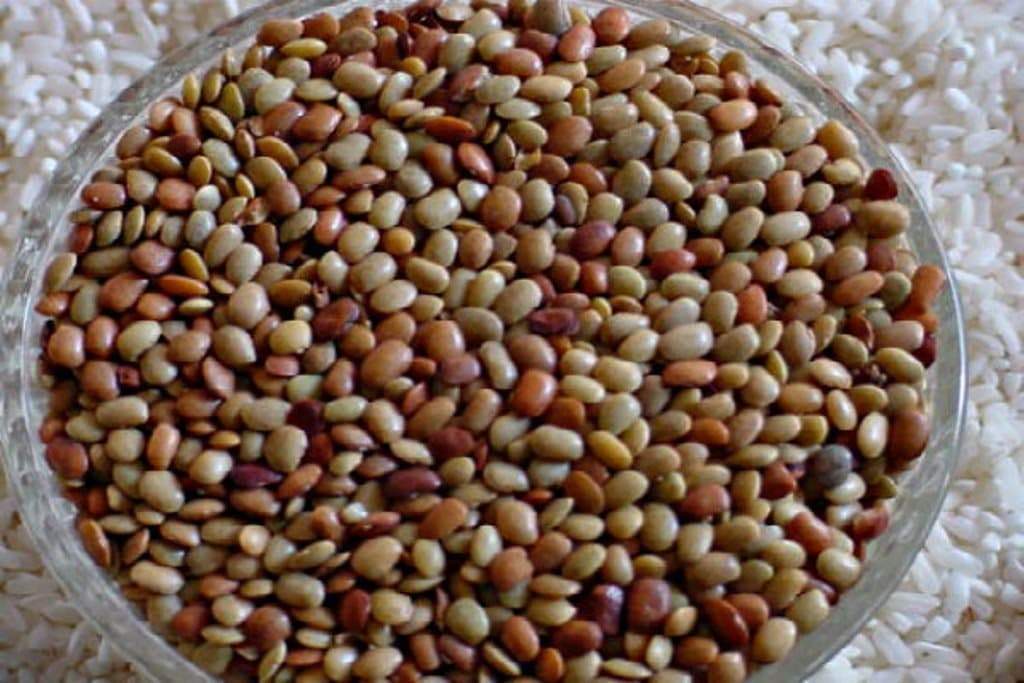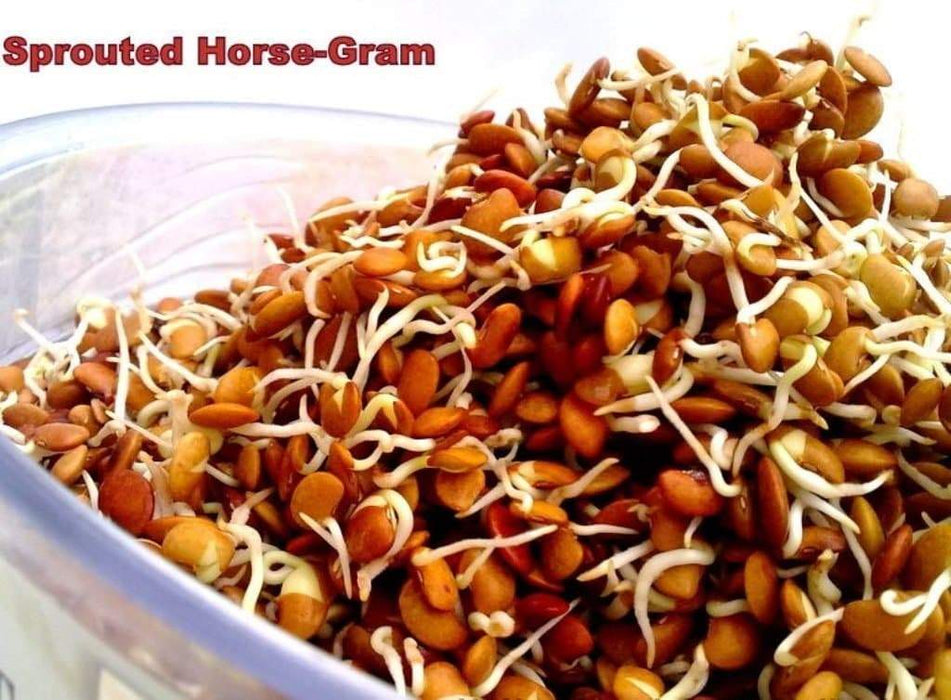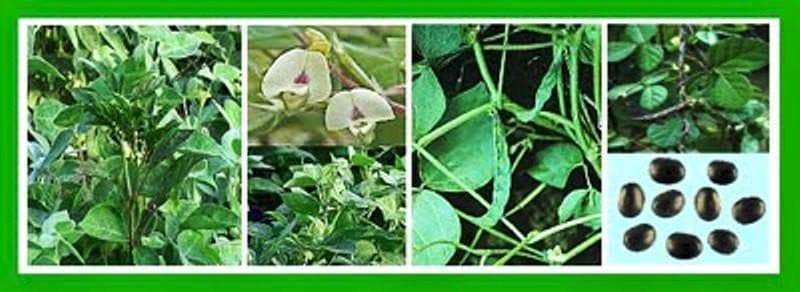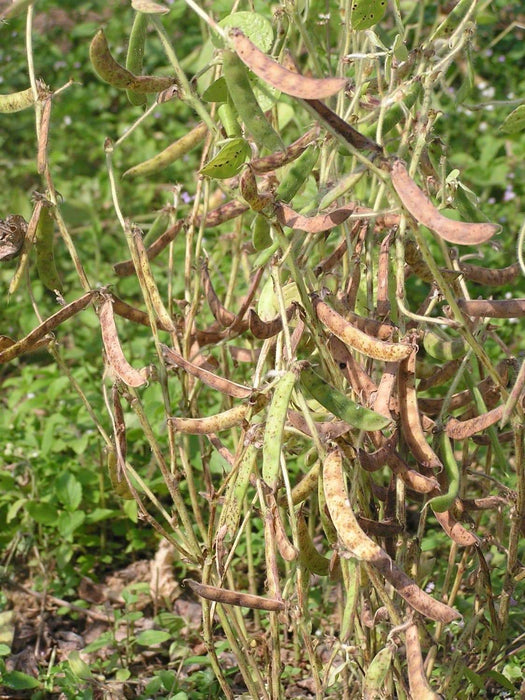
Horse gram BUSH Bean,Growing,Sprouting ,Heirloom ASIAN VEGETABLE
Original price
$ 3.25
-
Original price
$ 12.05
Original price
$ 3.25
$ 3.25
-
$ 12.05
Current price
$ 3.25
Most orders are processed by the next day
Select your desired size and/or color from the available options.
Horse gram seeds (Indian name: Kulthi) Macrotyloma uniflorum,Organic Heirloom
Untreated Seeds. For Growing Or Sprouting
Legumes and other beans that are sprouted contains high amount of vitamins and micro nutrients.Usually making sprouts takes complete two days. we can leave it for another day or so, if we want sprouts to grow even more longer.Every variety of beans has its own nature and sprouting time differs.soaking time is normally eight to ten hours.These small little white sprout is common among ‘Asian cuisine’ and the energy of digestion is high in this sprouts
Horse Gram (Macrotyloma uniflorum) is one of the lesser known beans. The whole seeds of horse gram are generally utilized as cattle feed. However, it is consumed as a whole seed, as sprouts, or as whole meal by a large population in rural areas of southern India. Medical uses of these legumes have been discussed. It is mostly used in South Indian states.
This vine goes by many names, including Yellow Hyacinth bean, Muthira and Indian Horse Gram. Throughout the tropics it is grown for its nutritious seeds, which make excellent sprouts, and as animal fodder. As it grows, it adds nitrogen to your soil as well as beauty to your view. Plant during the summer in full sun with something to climb on - excellent for planting after your veggie garden is finished for bringing the nitro.
Step 1
Prepare the planting area in the spring after the last threat of frost passes. Cultivate the soil with the garden spade down to a depth of at least 6 inches. Sprinkle 2 inches of compost over the top of the soil and work the compost in well with the garden spade. Rake the soil smooth.
Step 2
Make planting rows 2 feet apart with the hoe. Make the rows 1 inch deep.
Step 3
Plant the mung beans 1 inch apart along the rows. Cover the seeds with 1 inch of soil. Water the newly planted mung bean seeds generously.
Step 4
Keep the soil evenly moist while the mung beans are germinating.
Step 5
Remove weeds by hand as they appear, to keep the area free of weeds.
Step 6
. Apply Organic fertilizer to the mung beans when the plants are approximately 6 inches high.
Step 7
Harvest mung beans approximately 100 days after planting. Remove the entire plant from the ground by pulling it up.
Step 8
Tie up to five bean plants together to make bunches. Hang the bunches upside down in a shed. Alternatively, spread newspaper on the floor of a shed and spread the mung bean plants in a single layer on the newspaper. Allow the mung beans to dry completely within the pods.
Select your desired size and color from the available option
Untreated Seeds. For Growing Or Sprouting
Legumes and other beans that are sprouted contains high amount of vitamins and micro nutrients.Usually making sprouts takes complete two days. we can leave it for another day or so, if we want sprouts to grow even more longer.Every variety of beans has its own nature and sprouting time differs.soaking time is normally eight to ten hours.These small little white sprout is common among ‘Asian cuisine’ and the energy of digestion is high in this sprouts
Horse Gram (Macrotyloma uniflorum) is one of the lesser known beans. The whole seeds of horse gram are generally utilized as cattle feed. However, it is consumed as a whole seed, as sprouts, or as whole meal by a large population in rural areas of southern India. Medical uses of these legumes have been discussed. It is mostly used in South Indian states.
This vine goes by many names, including Yellow Hyacinth bean, Muthira and Indian Horse Gram. Throughout the tropics it is grown for its nutritious seeds, which make excellent sprouts, and as animal fodder. As it grows, it adds nitrogen to your soil as well as beauty to your view. Plant during the summer in full sun with something to climb on - excellent for planting after your veggie garden is finished for bringing the nitro.
Step 1
Prepare the planting area in the spring after the last threat of frost passes. Cultivate the soil with the garden spade down to a depth of at least 6 inches. Sprinkle 2 inches of compost over the top of the soil and work the compost in well with the garden spade. Rake the soil smooth.
Step 2
Make planting rows 2 feet apart with the hoe. Make the rows 1 inch deep.
Step 3
Plant the mung beans 1 inch apart along the rows. Cover the seeds with 1 inch of soil. Water the newly planted mung bean seeds generously.
Step 4
Keep the soil evenly moist while the mung beans are germinating.
Step 5
Remove weeds by hand as they appear, to keep the area free of weeds.
Step 6
. Apply Organic fertilizer to the mung beans when the plants are approximately 6 inches high.
Step 7
Harvest mung beans approximately 100 days after planting. Remove the entire plant from the ground by pulling it up.
Step 8
Tie up to five bean plants together to make bunches. Hang the bunches upside down in a shed. Alternatively, spread newspaper on the floor of a shed and spread the mung bean plants in a single layer on the newspaper. Allow the mung beans to dry completely within the pods.
Select your desired size and color from the available option
LET OUR CUSTOMER SPEAK FOR US

![[Seeds] - Caribbeangardenseed](http://caribbeangardenseed.com/cdn/shop/files/gift-card-gift-card-1_1024x1024_dfa857db-9150-4315-a362-7f0bb3fb9c47_60x28.png?v=1703978838)



